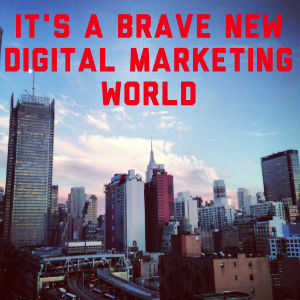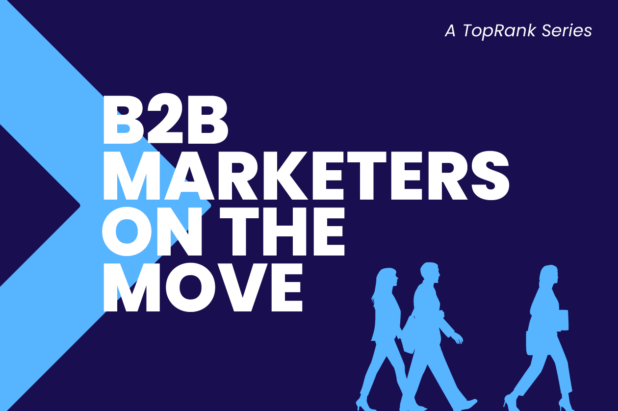 Ubiquitous internet connectivity and information overload have changed the landscape of brand and customer communications forever.
Ubiquitous internet connectivity and information overload have changed the landscape of brand and customer communications forever.
For stats fans, that translates to 10 billion connected devices and 90% of the world’s data created in the past 2 years.
How does this change digital marketing in 2014?
First of all, the evolution of social technologies and the impact on consumer behavior has led to different expectations. Consumers expect to find answers to their questions on search engines and social networks alike. They also expect to interact with what they find – commenting, sharing, rating and contributing. And transacting.
Is your brand meeting those expectations? Do you know if they exist for your specific customers?
Search is the “Mack Daddy” of answering questions and that’s why paid and organic search are so powerful. For companies that know their customers’ needs and can implement search ads and organic content accordingly, it’s the perfect moment to be exactly where buyers are looking. You know, it’s the ZMOT (Zero Moment of Truth).
The New Face of SEO
After Google announced the Hummingbird update (a month after it was implemented) there’s been a flurry of Hummingbird optimization advice. If those folks knew something was different, they’d have been pontificating a month earlier. That said, there’s some good news for content based marketers that leverage social networks, media relations and customer experience optimization tactics.
Understanding the context for why your buyers need certain topics or categories of information and the questions they’re asking is core to content marketing strategy.
Content mapped to stages of the buying cycle and useful information that engages along the way from awareness to purchase to advocacy sounds like the kind of optimization Google (and your customers) can get on board with. Add in topically themed, third party signals of credibility from industry publications that cover your brand editorially as well as robust social network activity and I think we’re on to something. Let’s call it SEO 5.0.
Search & Answers Aren’t Enough.
While very powerful, providing basic answers to customers’ questions is not enough. To stand out, successful brands are creating more engaging and “infotaining” experiences through rich media and storytelling like the examples I shared in last week’s B2B marketing post. They’re creating these experiences with content across channels and enabling the discovery of that rich content with optimized, socialized and paid media.
The result? Becoming the “best answer” wherever it is that buyers are looking.
To be, or not to be (the best answer)
The most fundamental integrated online marketing advice I could give for 2014: Focus on being the best answer for whatever it is that your customers care about most when they need your product or service. Be credible and be easy to find, buy and share across all channels that matter to your customers.
If you’re not the best answer, how will you stand out? How will you ever get prospects to care about you?
How companies are evolving integrated online marketing
Singular channel promotions (let’s run AdWords or let’s send out an email blast) have given way to muti-channel channel marketing where consumers can discover, consume and act on brand information on a variety of platforms. That’s not to say multi-channel is new, but there are a lot more channels to deal with now and more companies are trying to be present on more of them.
Some brands are taking it a step further and coordinating the kind of multichannel marketing efforts that create congruent and complementary customer experiences across different platforms. Retail marketers call it “omni-channel” marketing. Such coordinated, multi-channel efforts are more complex, but supporting “the brand story” and customer experience consistently across paid, owned, earned and shared media is an idea many progressive brand marketers are embracing. I think it will be even more of a hot spot in 2014.
Discover, Consume, Act
The challenge for brands to become the best answer and a great experience, is to understand the relationship between the consumer and information that helps them achieve their goals and satisfy their interests. It’s important that brands understand this relationship in terms of how consumers discover, consume and act on information as they experience the brand engagement lifecycle from awareness to purchase to advocacy.
Think about it: Are you the best answer wherever customers are looking? Is your brand meeting customer expectations in terms of useful, engaging content experiences?
By understanding, planning and optimizing for the customer experience, brands can better engage with information in a meaningful way that supports both customer and business objectives. Optimization for the customer journey means content planning, creation, socialization, promotion and measurement are accountable to three key elements: attract, engage and convert.
- Attract – How will will this content attract the right customers?
- Engage – What stories and information experience will we offer that matters most to customers?
- Convert – What action will we offer the customer as a next step? (It doesn’t need to be a lead or monetary transaction conversion)
Hold yourself accountable to developing content experiences that support being the best answer for what your brand stands for and what customers care about. Understand how your distinct customer segments discover, consume and act on information so you can plan an optimized and socialized content marketing strategy that attracts, engages and converts across the entire customer journey.
Now the question is, how will your online marketing efforts be integrated and optimized for 2014?


